How to Measure For Venetian Blinds
Tips
Use a metal tape measure to ensure accurate measurements
Headrail Sizes Guide
25mm
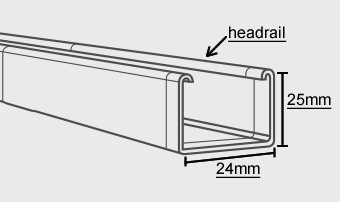
35mm
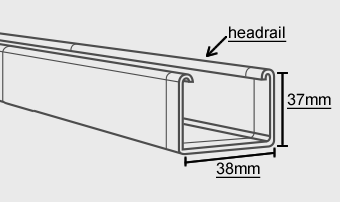
50mm
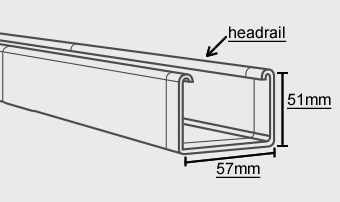
How to Measure Venetian Blinds For Standard Windows
Recess Size
Measure the wall-to-wall width at 3 places and the drop from the top recess to the window sill. Note down the smallest of each of the 3 measurements. Do not make any deductions, we will do this during manufacture. Approximately 10mm from the width to ensure a comfortable fit. You can order in inches, cm, or mm.
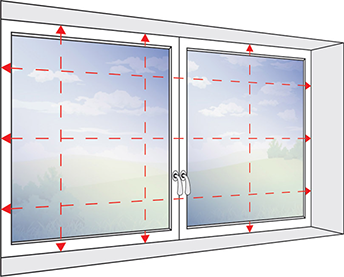
Exact Size
Measure the wall-to-wall width at 3 places and the drop from the top recess to the window sill. Add on 30cm to the width and drop to allow for sufficient overhang. The blind will be made to these exact sizes from the top of the track to the bottom of the fabric. You can order in inches, cm, or mm.
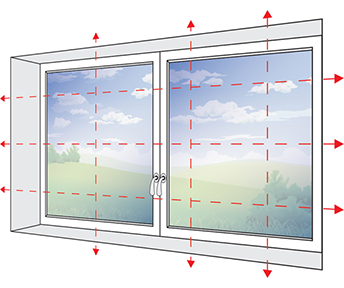
Part Tiled Recess
Measure the full width at the top and middle of the recess then the width between the tiles. Use the smallest width and order as recess size. For the drop measure from the top of the recess to the window sill.

How to Measure Venetian Blinds For Bay Windows
Angled Bay Windows
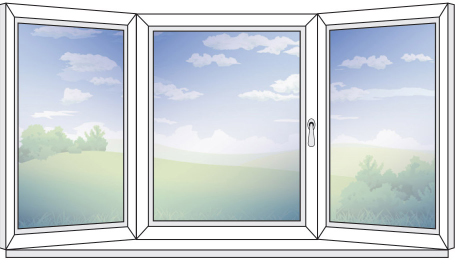
Step 1: Choose the slat size
When measuring for angled bay windows you need to allow for the head-rail and valance depth and window handles which affect the size of the blind when fitted.
There are 3 different slats sizes which will affect the sizes of the brackets and head-rail, 25mm/35mm/50mm.
Once you have chosen the slat size you can use the illustration above to determine the allowance which will be referred to as X for the next step.
Head-rail Allowance:
25mm slat size: X = 24mm
35mm slat size: X = 38mm
50mm slat size: X = 57mm
Step 2
Find the handles allowance. If you have window handles, measure how far out they protrude. e.g. 5.5cm (55mm) in the image opposite. This will be referred to as Y for the next step.
example Y = 55mm
Calculate total allowance.
Add (Y) to the allowance for the head-rail and valance depth (X) that you noted down from the previous page to get Z.
Total allowance will be calculated using the following:
X + Y = Z
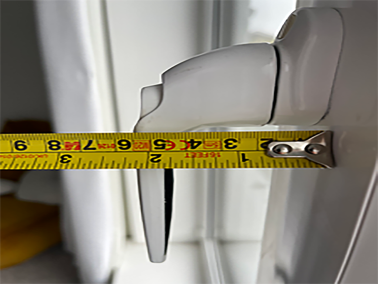
Step 3
Take an A4 sheet of paper and cut in half. Place the two pieces of paper next to each other and mark a line at measurement Z.
e.g.
25mm slat size, window handles 55mm
24mm (x) + 55mm (Y) = 79mm (Z)
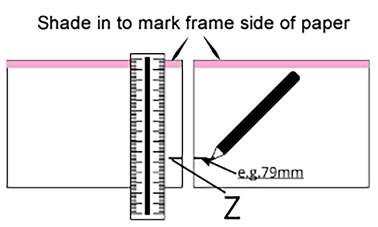
1) Place the pieces of paper on the window sill touching the frame and slide together until the two lines meet.
2) Then using a pencil make a mark on the window sill at the point where the corner of the fabric meets the frame.
3) Repeat on the other angles around the bay.
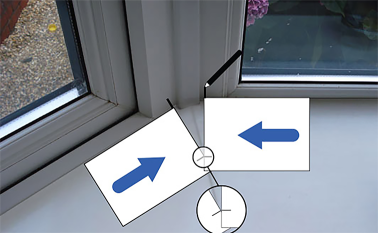
Measure the distance between the two pencil marks on each window around the bay as shown on then illustration. This will give you the widths the blinds will need to be.
Drop
Measure from where the top of the bracket is to be fitted to the window sill. Check the drop all around the bay as it will often differ.
Order all blinds as EXACT SIZE
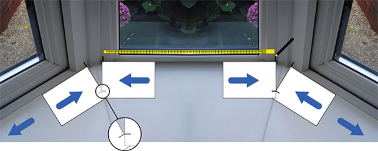
Box Bay Windows

The first thing to do is decide how you want to fit your blinds. Choose from option 1, 2 or 3. Review the summary next to each image for tips on which is best for your window.
Option 1: The most common method of installation
This method is designed to ensure that the two side blinds butt up against the front blind which is measured to fill the entire width of the front window.

Option 2: The most tricky method of installation
For the confident measurer, this gives a more professional fit as the blinds meet in the corner but is dependent on a minimum frame size larger than the head-rail depth.
Measure from the corner to the glass, if the frame is less than the head-rail depth then go for option 1 or
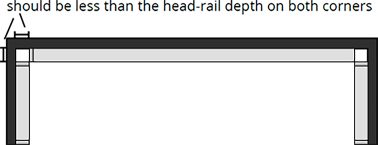
Option 3: Good if you have small side windows
If the side windows are so small that once the bracket allowance is deducted they will be too small to be made.
This method does result in a gap between the blinds and the glass will be visible.

Option 1: The most common method of installation
1) Measure the full width of the front window. Order as RECESS SIZE
2) Measure the full width of each side window separately as they are often different and note the sizes down then deduct X from that size.
e.g. 25mm slat size : 55mm Handle allowance
Side window 870mm wide
Total allowance: Z = X (24mm) + Y (55mm) = 79mm
870mm - 79mm = 791mm wide
3) Order the two side blinds as EXACT SIZE.
Option 2: The most tricky method of installation
On both corners measure from the corner of the bay to the start of the glass, if either measurement is less than the depth of the head-rail then we recommend to not use this option and use option 1 or option 3.
1) Measure the full width of the front window and deduct TWICE the bracket & handle allowance Z.
e.g. 25mm slat size : 55mm Handle allowance
Front window 2000mm
Total allowance: Z * 2 = X (24mm) + X (24mm) + Y (55mm) + Y (55mm) = 158mm
2000mm - 158mm = 1872mm wide
2) Measure the full width of each side window separately as they are often different and note the sizes down then deduct X from that size.
e.g. 25mm slat size : 55mm Handle allowance
Side window 870mm wide
Total allowance: Z = X (24mm) + Y (55mm) = 79mm
870mm - 79mm = 791mm wide
3) Order the all 3 side blinds as EXACT SIZE.
Option 3: Good if you have very small side windows
1) Measure the full width of the front window and deduct TWICE the bracket & handle allowance Z.
e.g. 50mm slat size : 55mm Handle allowance
Front window 2000mm
Total allowance: Z * 2 = X (24mm) + X (24mm) + Y (55mm) + Y (55mm) n= 158mm
2000mm - 158mm = 1872mm wide
2) Measure the full width of each side window separately as they are often different and note the sizes down, no deductions are made.
3) Order ALL THREE blinds as RECESS SIZE.
DROP
1) Measure the full drop of the window from where the brackets are mounted to the window sill.
How to Measure Venetian Blinds For Conservatories
Conservatories generally come in two shapes, angled or square so all you need to do is use the same instructions as for bay windows.
Download Instructions
Download how to measure venetian blinds for normal windows
Download how to measure venetian blinds for angled bay windows
Download how to measure venetian blinds for box bay windows
Download how to measure venetian blinds for angled conservatories
Download how to measure venetian blinds for square conservatories




















































































